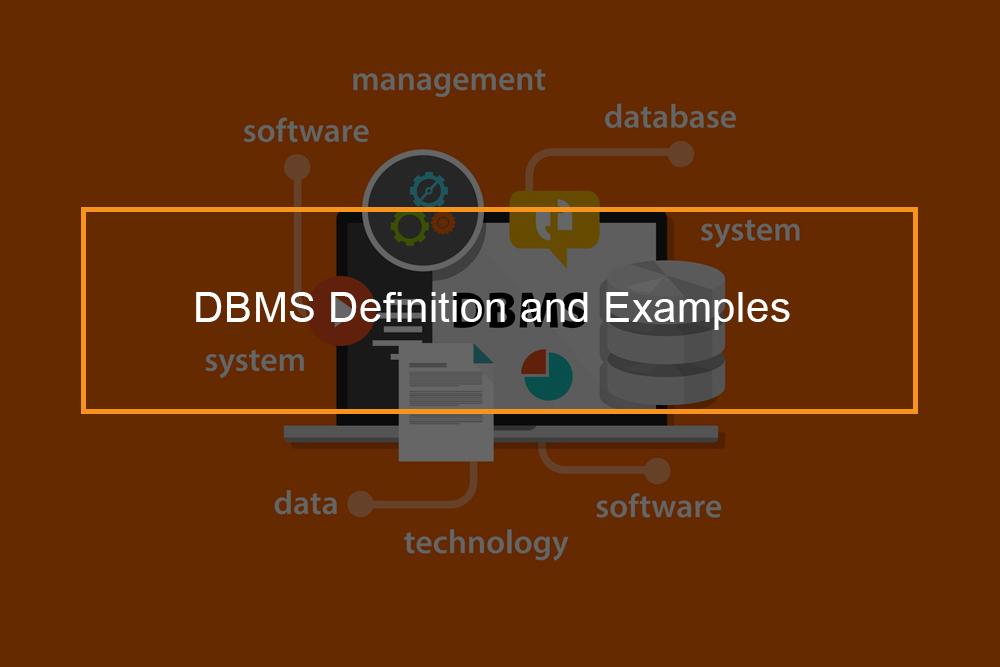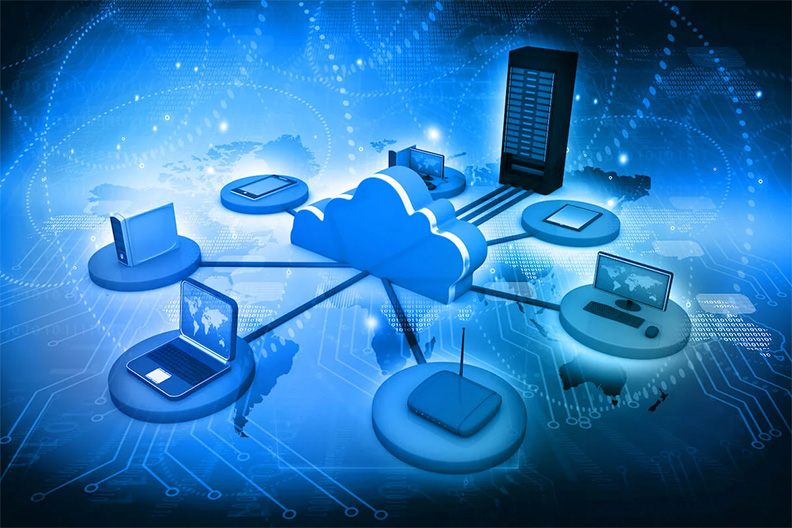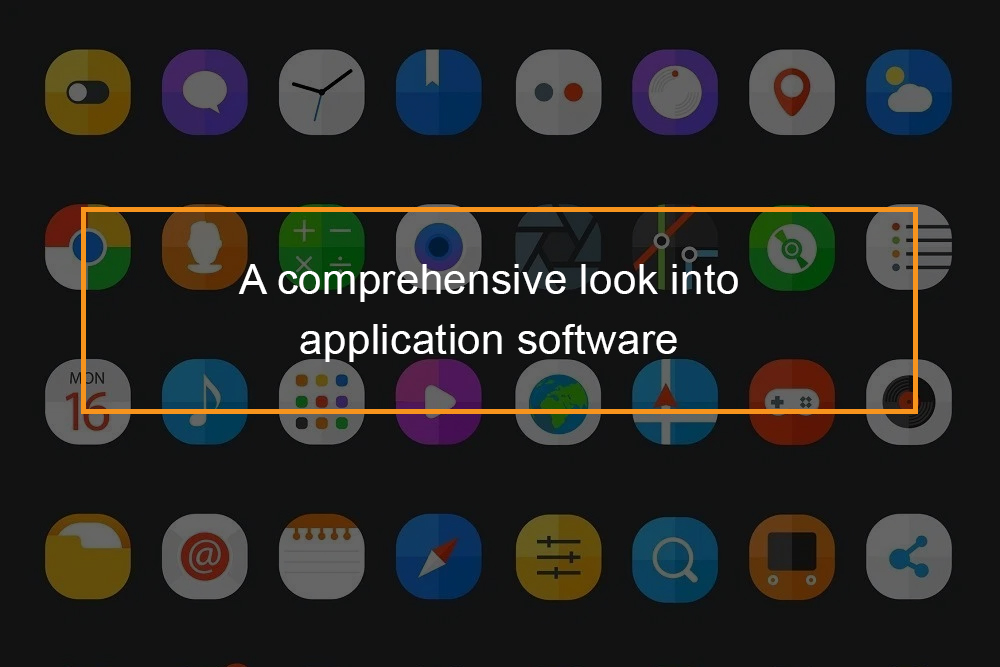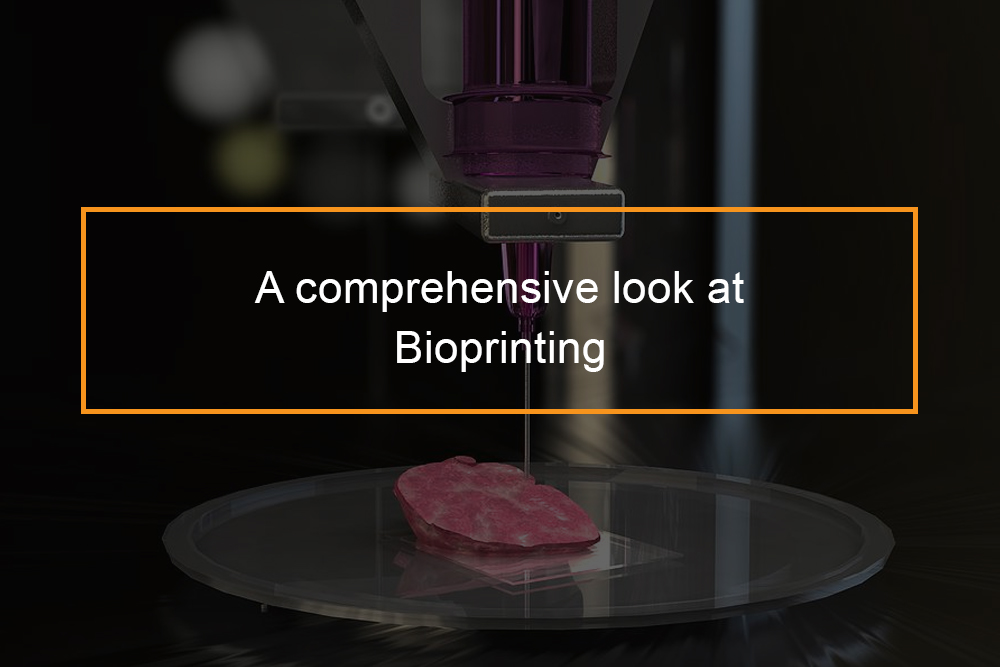
Database management system aka (DBMS) is a system program for making and managing databases. The DBMS gives clients and software engineers an efficient method to create, recover, update and oversee data.
What is DBMS And Give Examples?
Definition and Examples of DBMS
A database management system, popularly known as (DBMS) is a software package intended to characterize, control, recover and oversee data in a database. A DBMS controls the data, the format of data, field names, record and document structure. It likewise states guidelines to approve and control this data. A DBMS eases clients of encircling projects for information upkeep. Fourth-generation object languages, for example, SQL, function alongside the DBMS software to collaborate with a database.
Some different DBMS models include:
- MySQL
- dBASE
- SQL Server
- Oracle
- FoxPro
Types of Database Management System
Four Main Types of Database Management System
Database Management is a software program that utilizes a standard technique and running queries with some of them intended for the oversight and manipulation of databases.
We’ve listed four structural types of DBMS below:
- Hierarchical databases.
- Network databases.
- Relational databases
- Object-oriented databases
Hierarchical Databases
It is quick and basic. In a various leveled database, records contain data about their classifications of parent/child relationships, much the same as a tree structure. The structure suggests that a record can have repetitive data additionally. In this structure Data pursues a sequence of records, There are a lot of field values joined to it. It gathers all records together as a record type. These record types are similar to tables in the relational model, and with the individual files drawing a comparison from rows. To make connections between these record types, the progressive model uses these sorts.
Pros of Hierarchical Databases
The hierarchical database can be gotten to and refreshed speedily because in this model structure resembles a tree and it defines the relationship between records ahead of time.
Cons of Hierarchical Databases
This sort of database structure is that every youngster in the tree may have just a single parent, and relationships between children are not allowed, regardless of whether they bode well from a practical outlook. These databases are so in their plan, and including another field or record necessitates that the whole database is re-defined.
Network Database
Network databases are mostly available on large advanced PCs. It can create more relationships between various sorts of information, and network databases are known to be more proficient. It contains restrictions that must be considered to be when we need to utilize this sort of database. It is Similar to hierarchical databases, organized databases. Network databases are like various leveled databases by likewise having a different tiered structure. A system database looks increasingly like a web or interconnected system of records. In system databases, youngsters are called individuals and guardians are called occupiers. The distinction between every child or part can have more than one parent. The value of the network model is comparable with that of the progressive information display. Other bits of data naturally had more than one parent per child. The system display approved the demonstrating of many-to-numerous connections in information. The system demonstrates fundamentally the same as the various leveled shows indeed. The different leveled show is a subset of the system display. In any case, rather than utilizing a separate parent tree chain of command, the system display utilizes set hypotheses to furnish a tree-like order with the particular case that tyke tables were permitted to have more than one parent. It bolsters many-to-numerous connections.
Relational Databases
In relational databases, the connection between information records is relational. Progressive and system databases require the client to pass a pecking order to get to required information. These databases interface with the data in various records by utilizing natural information numbers or a key field. Information in relational databases is put away in different access control tables, each having a key field that fundamentally recognizes each column. In the relational databases are more dependable than either the progressive or system database structures. For relational databases, tables or documents full with information are called relations (tuples) assigned a row or record, and columns are known as fields or attributes. Relational databases, for each table, have a critical field that remarkably demonstrates each row, and that you can use these critical fields to link one table of information to another.
The relational database has two noteworthy reasons.
- You can use Relational databases with practically no prior training.
- You can adjust database entries without altering the whole body.
Properties of Relational Tables
- Its Values are Atomic
- Each Row is separate from the next.
- Segment Values are of the Same thing.
- Segments are undistinguished.
- The succession of Rows is Insignificant.
- Every Column has a typical Name.
Object-based Model
In this Model, we need to examine the usefulness of the object-based situated Programming. It takes more than capable of programming dialect objects. Protest DBMS’s expansion of the semantics of the C++ and Java. It gives full-included database programming ability while containing local dialect similarity. It adds the database usefulness to object programming languages. This approach is analogical of the application and database advancement into a steady information model and dialect condition. Applications require less code, utilize increasingly essential information demonstrating, and code bases are less demanding to keep up. Object designers can compose finished database applications with a good measure of extra exertion.
The object-based database deduction is the respectability of object-based programming dialect frameworks and predictable frameworks. The intensity of the object-based databases originates from the regular treatment of both steady information, as seen in databases, and temporary data, as found in executing programs. Object-Based databases utilize little, recyclable isolation of programming called objects. The items themselves are put away in the protest arranged database. Each object contains two components: A bit of information (e.g., sound, video, content, or designs). Guidelines, or programming programs called techniques, for how to manage the information
Cons of Object-based databases
- An object-based database is increasingly costly to create.
- Most businesses are reluctant to desert and change over from those databases; since they have just put cash in creating and actualizing.
Pros of Object-based databases
- The advantages to protest situated databases are convincing. The capacity to blend and match reusable articles gives unfathomable multi-media ability.
Advantages of Database Management System
Seven Advantages of DBMS
In comparison to the File-Based Data Management System, Database Management System has numerous focal points. A portion of these favorable circumstances are listed below:
Lessening Data Redundancy
The record-based management systems contained numerous documents that were put away in a wide range of areas in a framework or even over different structures. Along these lines, there were in some cases different duplicates of a similar document which lead to information excess. It is avoided in a database as there is a single database and any adjustment in it is reflected quickly. In such instances, you won’t experience issues with copy information.
Sharing of Data Based on Database authorization Protocols
In a database, the clients of the database can share the data among themselves. There are different dimensions of authorization to get to the data, and therefore the data must be shared dependent on the right authorization protocols underway. Numerous remote clients can likewise get to the database all the while and share the information between themselves.
Data Integrity
It implies that the data is exact and predictable in the database. Data Integrity is critical as there are numerous databases in a DBMS. These databases contain information that is obvious to multiple clients. So it is essential to guarantee that the information is right and reliable in every one of the databases and for every one of the clients.
Data Security
Information Security is a fundamental idea in a database. Just approved clients ought to be permitted to get to the database and their character ought to be validated utilizing a username and secret word. Unapproved clients ought not to be allowed to get to the database under any conditions as it abuses the respectability requirements.
Privacy- Authorized Database Records
The privacy rule in a database implies just the approved clients can get to a database as indicated by its protection requirements. There are dimensions of database access, and a client can only view the information he is authorized. For instance – In interpersonal interaction destinations, access imperatives are diverse for various records a client might need to view.
Backup and Recovery of Data
Database Management System consequently deals with reinforcement and recuperation. The clients don’t have to reinforcement data intermittently because the DBMS controls this. Also, it additionally reestablishes the database after an accident or framework inability to its past condition.
Data Consistency
It is guaranteed in a database since there is no data repetition. All data shows up reliably over the database, and the information is the same for every one of the clients seeing the database. Also, any progressions made to the database are quickly reflected by every one of the clients, and there is no information irregularity.
Disadvantages of DBMS
Four Major Disadvantages of DBMS
Although the database system yields extraordinary advantages over past information the executives approaches, database frameworks do convey critical drawbacks. For instance:
Hardware, Software, and Employees Supporting DBMS are Costly
One of the disadvantages of DBMS is Database systems require advanced hardware and programming and exceptionally talented workforce. The expense of maintaining the hardware, programming, and faculty needed to work and deal with a database framework can be considerable. There is disregard in licensing, training, and regulatory compliance expenses when database systems are under implementation.
Management of Database System Interface Complexity
Database systems interface with a wide range of advances and significantly affect an organization’s assets and culture. The changes presented by the reception of a database system must be under good management so that they help advance the organization’s goals. Given the way that database systems hold essential organization information that can be accessed from different sources, assessment of security issues must be constant.
Maintaining currency of the Database System
To expand the proficiency of the database system, you should keep it current. Hence, you should perform visit refreshes and apply the most recent patches and safety efforts to all columns. Since database innovation propels quickly, faculty training costs will, in general, be critical — seller reliance. Given the substantial interest in innovation and workforce training, organizations may be hesitant to change database vendors. As a result, vendors are less inclined to offer direct points of interest toward existing clients, and those clients may be limited in their decision of database system parts.
Frequent upgrade cycles of DBMS Equipment
DBMS sellers much of the time redesign their items by including new usefulness. Such new highlights regularly come packaged in new redesign forms of the product. A portion of these variants requires equipment updates. Not exclusively do the upgrades themselves cost cash, yet it likewise costs money to prepare database clients and executives to utilize and deal with the new highlights legitimately.
What is The Best Database Management System?
Five of The Best Database Management System
The most efficient way to visualize and organize your business information is by investing in a proper database solution. That’s why we’ve gathered this list to help you choose from some of the best software programs available out there.
1. TeamDesk is an Easily Customizable Database System
An adaptable database system. Simple to-utilize Customizable Mobile-upgraded. In case you’re searching for an incredible database arrangement that is additionally simple to utilize, at that point, it merits looking at Team Desk. It gives you the apparatuses to make custom databases rapidly with no earlier specialized learning. TeamDesk keeps running on the cloud through its very own safe servers, so you don’t have to put resources into your very own equipment. It’s accomplished a 99.96% uptime record in recent years, settling on it as a solid decision. The product keeps running on computers, iPhone, Mac, Windows and Android Phone. To create a database, you can either look over a library of predefined formats or assemble your very own sans preparation. When you’ve done that, you’re ready to evacuate and include functionalities as your business develops. As far as value, there are a few designs accessible. The starter bundle costs $49 (£36) every month, giving you a chance to mean five clients with a large measure of tables, records, storage room, and client support.
2. Knack- Cloud-based Database Storage
The cloud-based stage is under usage by a large number of organizations over the world, including Fortune 500 organizations, new businesses, instructive foundations, and philanthropies. It offers a scope of devices that plan to change the manner in which you sort out business information. You can structure dependent on measurements, for example, names and messages, connect records, and gain superior knowledge into your data by utilizing a scope of recipes and conditions. Additionally, the interface is anything but difficult to-utilize and requires no coding information. To get constant information experiences, you can set up dashboards kitted out with outlines, charts and pivot tables. You can likewise direct ventures crosswise over datasets and make utilization of adaptable channels. What’s more, much the same as TeamDesk, there’s an assortment of pre-constructed layouts accessible, which means you can set up cutting-edge databases rapidly. The product accompanies some slick web-based business capacities, as well. You’re ready to process installments, gifts, and online requests through coordination with installment suppliers, for example, PayPal and Stripe. At present, costs begin at $39 (£29) every month, although there’s a 14-day free preliminary accessible.
3.TablePlus – A Database Suitable For Mac
Accessible for the Mac, it gives you a chance to make and deal with plenty of social databases from one UI, including any semblance of MySQL, SQLite, Redis, Amazon Redshift and Postgres. It gives you a chance to make, inquiry, alter and spare databases effortlessly from a local application that is quick and simple to utilize. Notwithstanding, one of the characterizing highlights of this product is that it accompanies local TLS encryption to guarantee that essential business information never gets into the wrong hands. There are different features like multi-tab and multi-window modes so you can get a speedy diagram of different datasets. Also, you can follow the changes you’ve made to your databases through a capacity called Code Review. You can use part databases likewise into tabs and feature diverse datasets to build efficiency. Significant organizations and associations utilize this product, for example, Spotify, Apple, Intel, FastMail, Stanford University, Shutterstock, and Rocket Internet. You can buy TablePlus for $49 (£36). In case you wind up purchasing the arrangement yet choose it isn’t for you, there’s a 7-day cash back approach.
4. Oracle Database Cloud Service
It’s a multilayered database item that accompanies encryption arrangements coming up short on the case and has been planned particularly for application improvement, test and generation sending. The product sports a simple-to-utilize web reassure where clients can rapidly make and oversee databases. Clients gain admittance to the scope of provisioning decisions and pre-bundled groups, including alternatives for DevOps, execution, security, examination, and checking. You can manage data through apparatuses, for example, SSH, SQL Developer, Data Pump, and SQL Plus. You’ll have to connect with Oracle for a statement on evaluating, yet can demo the product to settle on an educated choice.
5. Microsoft Access is the Most Popular Database
First discharged in 1992, Microsoft Access is one of the most seasoned business database arrangements out there. It’s a simple to-utilize apparatus that gives you a chance to make databases for your business. Since it keeps running on the cloud, you can easily share databases with your associates, and there’s work in encryption to guarantee your information is secured continuously. In case you’re skilled in innovation, you can make your custom databases to suit the requirements of your association. Be that as it may, there’s likewise the choice to look over a gathering of expertly structured database layouts. The application can be incorporated with SQL Server and Azure SQL, making it less demanding to scale huge datasets. Access is accessible as a feature of the Office 365 bundle, which begins at £59 ($78) every year. Whatever the case, you can experiment with the product for nothing before focusing on a top-notch plan.
What is Relational Database Management System?
What is the Relational Model in Database?
Elements of a relational database the management systems. Components of the relational database the database management that overarches the essential relational database are so characteristic for tasks that it is difficult to separate the two practically speaking. The essential RDBMS functions include make, read, refresh and erase tasks, on the whole, known as CRUD. They frame the establishment of an efficient framework that advances predictable treatment of data.
Seven Difference Between DBMS and RDBMS ?
There are various features that set the relative database against the standard database model.
1. RDBMSes are Specially Designed to Help SQL Access Data
DBMSes and RDBMSes both include digital, the database and different offices to fundamental database structures. RDBMSes are specially custom fitted to help SQL access data.
2. Data Handling Made Easy via Metadata Accumulations
The RDBMS ordinarily gives data dictionaries and metadata accumulations valuable in data handling. These automatically aid data relationships and structures. Data storage management is a typical function of the RDBMS, and this has come to be characterized by data objects that extend from a large binary object (blob) string to stored systems. Data objects like this broaden the extent of fundamental relational database tasks and can be taken care of in different ways in various RDBMSes.
3. Extensions Enable SQL Match With Standard Programming Language
The most well-known method for data access for the RDBMS is using SQL. Its main machine language parts involve data manipulation language (DML) and data definition language (DDL) explanations. Extensions are accessible for improvement endeavors that match SQL use with standard programming languages, for example, COBOL (Common Business-Oriented Language), Java and .NET.
4. RDBMS Allows for Security Management of Data
RDBMSes utilize complex calculations that help many simultaneous client access to the database while keeping up data safety. Security management, which authorizes policy-based access, is one more overlay benefit that the RDBMS accommodates the essential database as it has functions in big business settings.
5. Data Stacking and Database Backup
RDBMSes assist the function of database administrators (DBAs) who must oversee and screen database movement. Utilities help computerized data stacking and database backup. RDBMSes manage log records that track system performance dependent on operational parameters. It empowers the estimation of database utilization, limit, and performance, especially question implementation. RDBMSes give graphical interfaces that assist DBAs to picture database movement.
6. Features Enable RDBMSes Deal With Business Transactions
While not constrained exclusively to the RDBMS, ACID consistency is a trait of relational innovation that has demonstrated imperative in big business registering. Functions like atomicity, consistency, isolation, and stability, these features have especially suited RDBMSes for dealing with business transactions.
7. RDBMS Assist Major Business Applications
The Relational database the management systems are integral to critical applications, for example, keeping money records, travel reservation frameworks and internet retailing. As RDBMSes have developed, they have accomplished more elevated amounts of question progressively streamlining, and they are essential parts of reporting, analytics and data warehousing applications for organizations too. RDBMSs are natural for activities of an assortment of big business applications and are at the focal point of most ace database systems.









